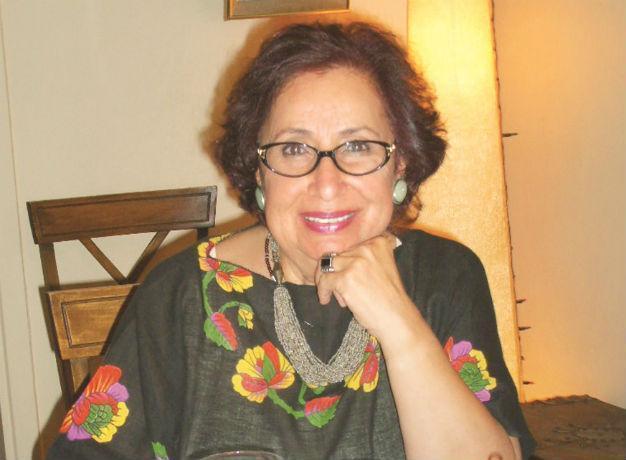The portraits of artists as chefs
Nazlan Ertan – ISTANBUL
 For many of us who lack the sparkling genius of creating an iPhone or discovering a theory of everything, eating and reading are life’s two great pleasures combined, hence the great success and abundance of cookbooks. They also make handy gifts, so around the new year you may find yourself with a stock of chic cookbooks - which directly conflict with your resolution to “eat wise and lose weight in the new year.”
For many of us who lack the sparkling genius of creating an iPhone or discovering a theory of everything, eating and reading are life’s two great pleasures combined, hence the great success and abundance of cookbooks. They also make handy gifts, so around the new year you may find yourself with a stock of chic cookbooks - which directly conflict with your resolution to “eat wise and lose weight in the new year.”Sevim Gökyıldız’s “Artists’ Tables” is one that stands apart from your regular cookbook. Gökyıldız, a gourmet who has been writing about French and Turkish cuisine in a wide spectrum of magazines for the last thirty years, focuses on the artists’ of the Belle Époque (1871- 1914) and explained how they transferred their creativity to the “art of the table.”
Honore de Balzac, the prolific French writer of “Nana” and “Pere Goriot,” was fond of the rich tables whose products were “meticulously chosen” – unlike the overall untidy appearance of the writer. The oysters came from Ostend, Belgium and the sole from Normandy. He would stick with the restaurants he knew and had a mean recipe for “vin chaud,” hot wine, which required a touch of vanilla.
Unlike the extravagant Balzac, Marcel Proust was selective, almost prissy in taste. “Cooking alone, what a great pleasure,” he commented once. His love for childhood tastes was eternalized in the French expression, “Proust’s Madeleine,” a universal reference for an innocent childhood taste that brings back memories (This old theme is taken up by Muriel Barbery in her book “Une Gourmandize,” where a talented but detestable food critic lays dying and wondering just what his favorite taste is, while everyone else around his deathbed is busy hating him). Gökyıldız, true to form, provides the recipe for “the Madeleine” - a simple combination of sugar, butter, flour and eggs.
“Artists Table” takes up the eating habits of painters Renoir, Picasso and Toulouse-Lautrec and writers George Sand, Agatha Christie and Alexander Dumas, as well as others. One of the most detailed and eccentric tables are that of Colette, the unorthodox French writer who believed heated champagne was the best way to cure the common cold.
New Year’s and its immediate aftermath, where big tables come together, seems a good occasion to be inspired by the Belle Epoque. This was indeed the aim of Gökyıldız. “I want to urge people to come together around a table, with it tastes and colors, and talk, enjoy the flavors and the conversation and be inspired,” she told Hürriyet Daily News. Her own inspiration comes from the Province, the south of France, where the sun creates vivid colors and succulent tastes.
“With the exception of Agatha Christie, all of the artists in the book spent time in the Province,” Gökyıldız said. “I do believe that the Mediterranean culture is very good at creating great tables and creating bridges between people who sit and talk together.”
Gökyıldız herself is an important bridge-maker in the sense that she has been able to create culinary links between the Turks and the French. Her blog in French describes the secret of the Turkish cuisine to a French-speaking public.
Mehmet Yalçın, who wrote the book’s preface, spoke about how a Russian taught the elite of Ankara, the young capital of the republic, the art of the table. Georges Karpitch, known as Papa Karpiç, told the waiters of the “Karpiç Restaurant” in Ankara that there had to be an eight-minute interval between the soup and the main dish. One of the waiters complained: “But Papa Karpiç, the guests, particularly members of the parliament, do not want to wait that long. One of them threatened to beat me up.”
“And if you serve too quickly, I will both beat you up and fire you. You choose,” said Papa Karpiç.
Teaching, even teaching the art of the table, clearly is no easy thing.
















